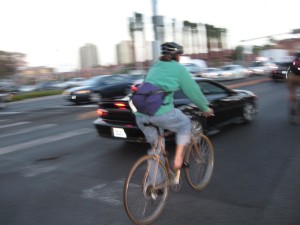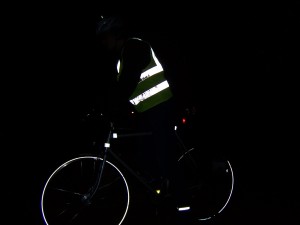
Utah is a beautiful place, and we’ve all been tempted to stare at a mountain sunset for a few seconds too long. We know what it’s like. But as Utah’s Bicycle Lawyers, we also know how important it is for cyclists and drivers to stay focused on the road. We hear the term “defensive driving” all the time, but what about defensive cycling? Drivers are unpredictable, and defensive cycling can help you keep your guard up. It’s not unusual to be more alert during some rides than others, but you never know when your full attention will become a matter of life and death. Here is some advice on how you can practice defensive cycling:
Injured in a Bike Accident?
Contact Us Today
Know the Rules
- You must ride with the flow of traffic. Bicycles are considered moving vehicles in Utah, and therefore, cyclists have the same responsibilities and can expect the same respect as drivers.
- Stay as close to the right-hand edge of the roadway as possible. Only ride two-abreast if you can do so without impeding traffic.
- Only ride on sidewalks and trails when it is allowed. When riding on a sidewalk, be sure to yield to pedestrians.
- Follow normal intersection procedures.
- Use hand signals at least 2 seconds before completing a turn or stop. This is key to defensive cycling, as it lets otherwise reckless drivers prepare to give you the space you need.
- Never race and only carry your bike’s intended number of riders.
 Wear a Helmet
Wear a Helmet
- Utah is one of the few states which do not legally require cyclists to wear a helmet. You must make this decision for yourself, but statistics show that wearing a helmet can minimize the impact of an accident:
- In 2013, 63% of the cyclists who died in accidents were not wearing helmets.
- The most serious injuries experienced by cyclists are traumatic brain injuries.
- Helmets reduce the risk of head injury by 50%.
Consider These Safety Tips
- Be cautious when passing on the right.
- Utah law was recently amended to allow cyclists to utilize the right shoulder to pass on the right. Because of this, be aware that motorists may not expect you to pass on the right, and you may be in their blind spot.
- Don’t use headphones while cycling.
- As nice as it is to listen to music while cycling, you need to be able to hear what is going on around you. If you must wear headphones, always keep one ear free so you can hear anything which may compromise your safety.
- Dress to be seen.
- As a means of defensive cycling, wear brightly colored clothing so motorists can easily see you. Never wear dark clothes at night.
- Use lights at night.
- When cycling during the night, make sure your bicycle is equipped with a headlight on the front and a rear red reflector on the back. Motorists have a difficult time spotting cyclists at night, and using lights and reflective gear will make you more visible.
 Defensive Cycling and You
Defensive Cycling and You
- You can’t control what drivers do, but you can be alert and aware of mistakes they are about to make that could hurt you.
- Watch carefully for objects, animals, people, and cars that could be in your way.
- Strive to minimize distraction. Stop to appreciate beauty, take pictures, or answer phone calls in a safe place off the road.
Remember that if you practice defensive cycling by following traffic rules and watching out for others, you can greatly increase your safety and ability to ride the beautiful roads and trails of Utah. If someone else breaks these rules and you are injured because of it, the Utah Bicycle Lawyers are here to help. Contact us today for a free consultation, and we will do our best to ease your recovery and get you what you deserve.
